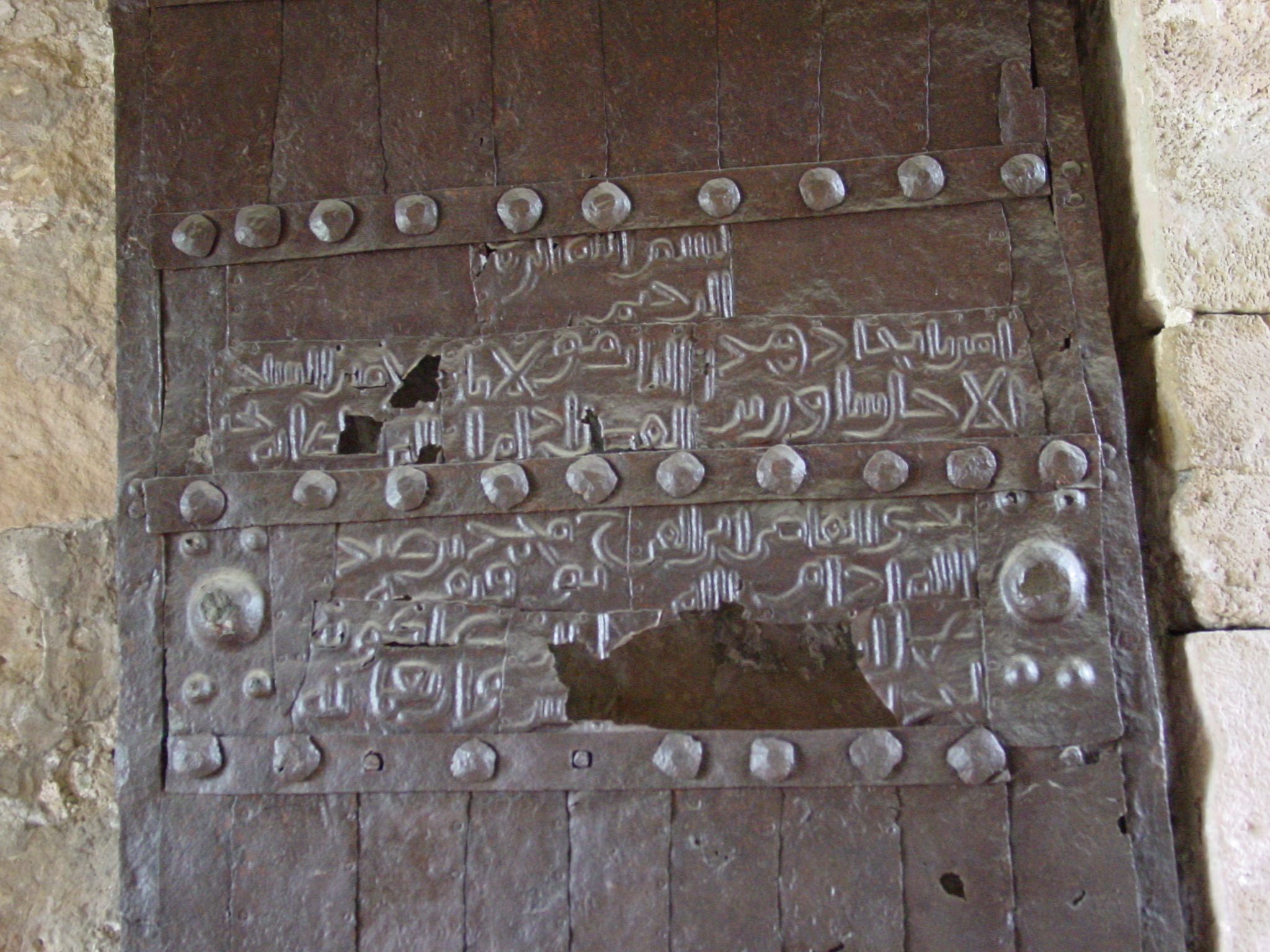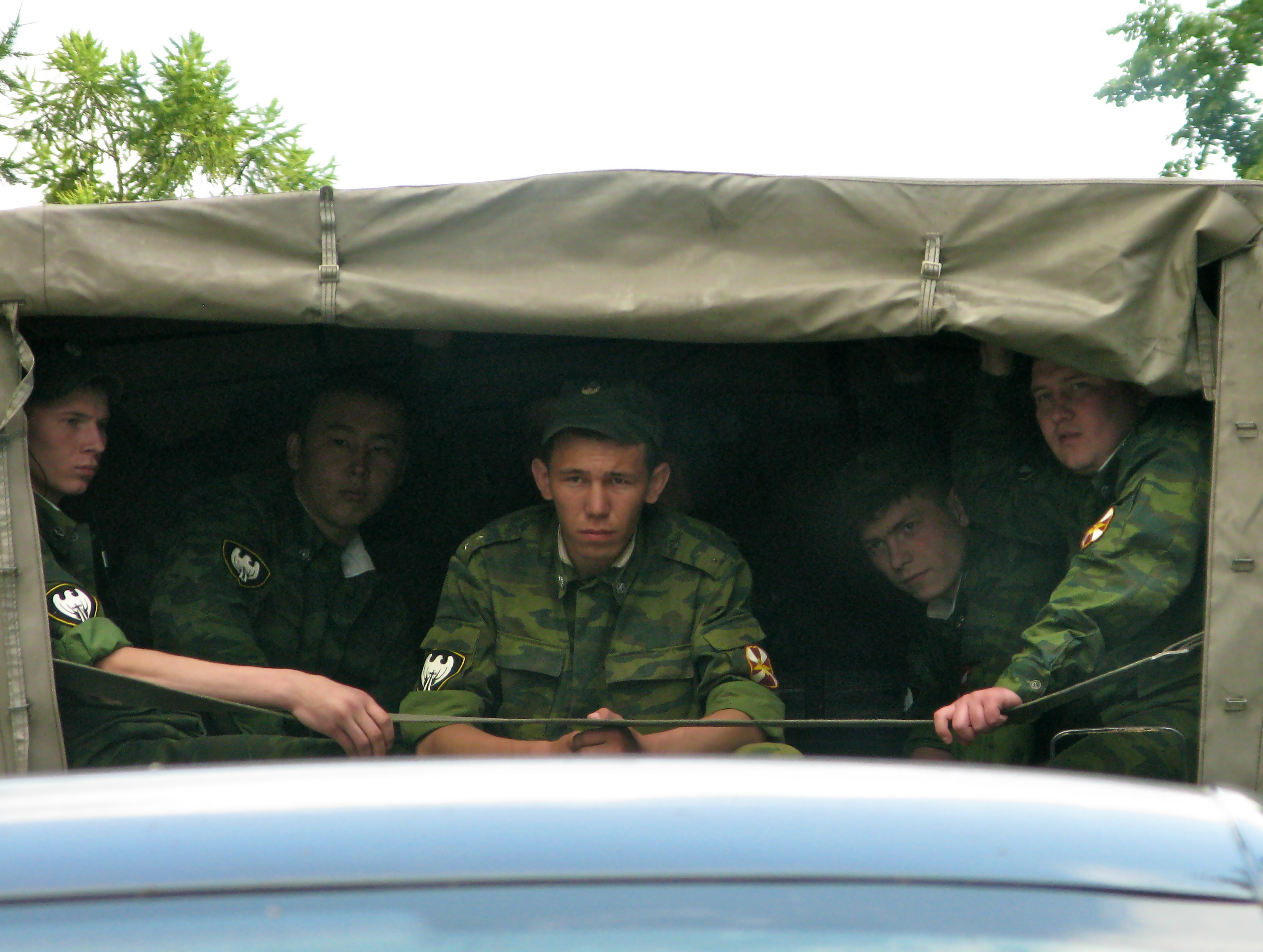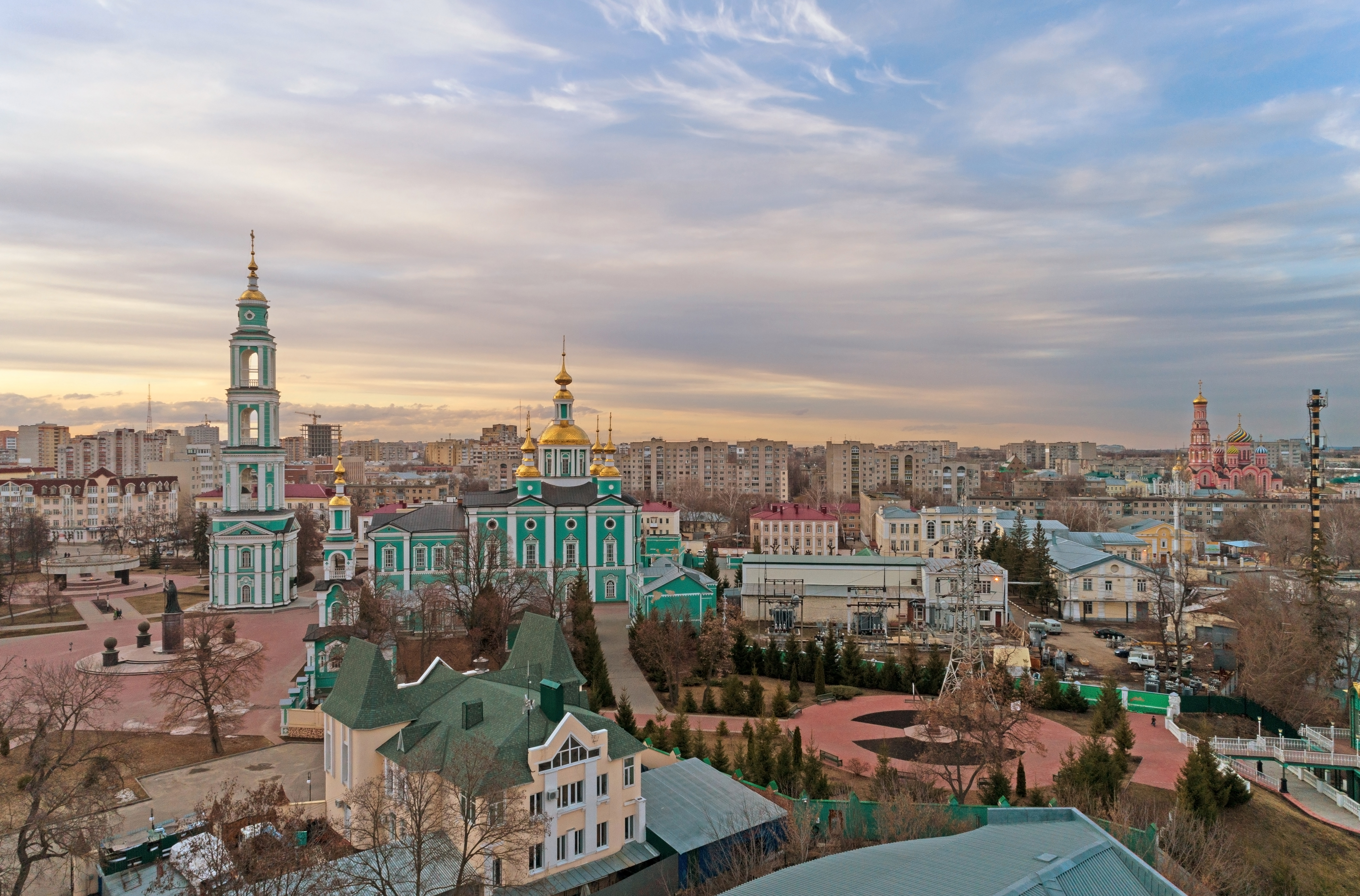|
Air Assault Battalion (Soviet Union)
At least 20 Separate Air Assault Battalions were formed in the Soviet Army between 1979 and 1981. These units provided airmobile capability to field armies, groups of forces and military districts. Five mobilization air assault battalions were also created, the first in 1981 and the remainder in 1987. Almost all of these units were disbanded between 1989 and 1991. The battalions of the first three separate air assault brigades to be formed (the 11th, 13th and 21st) were designated as separate air assault battalions. The 11th and 13th Brigades formed in 1968 and the 21st in 1972. The 617th, 618th and 619th Battalions were with the 11th Brigade, the 620th, 621st and 622nd were with the 13th, and the 802nd, 803rd and 804th were with the 21st Brigade. This article aims to provide a history of the independent air assault battalions not part of air assault brigades. Separate Air Assault Battalions * 48th Air Assault Battalion – Activated January 1980 in Khyriv as the 39th Air As ... [...More Info...] [...Related Items...] OR: [Wikipedia] [Google] [Baidu] |
Soviet Il-76 Candid Loading Paratroops
The Union of Soviet Socialist Republics. (USSR), commonly known as the Soviet Union, was a transcontinental country that spanned much of Eurasia from 1922 until it dissolved in 1991. During its existence, it was the largest country by area, extending across eleven time zones and sharing borders with twelve countries, and the third-most populous country. An overall successor to the Russian Empire, it was nominally organized as a federal union of national republics, the largest and most populous of which was the Russian SFSR. In practice, its government and economy were highly centralized. As a one-party state governed by the Communist Party of the Soviet Union (CPSU), it was a flagship communist state. Its capital and largest city was Moscow. The Soviet Union's roots lay in the October Revolution of 1917. The new government, led by Vladimir Lenin, established the Russian SFSR, the world's first constitutionally communist state. The revolution was not accepted by all wi ... [...More Info...] [...Related Items...] OR: [Wikipedia] [Google] [Baidu] |
83rd Air Assault Brigade
83rd may refer to: *83rd Academy Awards, a ceremony that honored the best films of 2010 in the United States and took place on February 27, 2011 *83rd Grey Cup, the 1995 Canadian Football League championship game *83rd meridian east, a line of longitude 83° east of Greenwich *83rd meridian west, a line of longitude 83° west of Greenwich *83rd parallel north, a circle of latitude that is 83° north of the Earth's equatorial plane, in the Arctic *83rd Street (other) Military units * 83rd Division (other), several units * 83rd Regiment (other), several units * 83rd Squadron (other), several units Politics *83rd Delaware General Assembly, a meeting of the Delaware Senate and the Delaware House of Representatives *83rd United States Congress, a meeting of the United States Senate and the United States House of Representatives **List of United States senators in the 83rd Congress by seniority * Lindner Ethics Complaint of the 83rd Minnesota Legislat ... [...More Info...] [...Related Items...] OR: [Wikipedia] [Google] [Baidu] |
Transcaucasian Military District
The Transcaucasian Military District, a military district of the Soviet Armed Forces, traces its history to May 1921 and the incorporation of First Republic of Armenia, Armenia, Azerbaijan Democratic Republic, Azerbaijan, and Democratic Republic of Georgia, Georgia into the Soviet Union. It was disbanded by being redesignated as a Group of Forces in the early 1990s, after the Dissolution of the Soviet Union, Soviet Union collapsed. The military district formed as a basis of the modern day armed forces of Armenia, Azerbaijan, and Georgia (country), Georgia as well as unrecognized polities of Abkhazia and South Ossetia. History The Transcaucasian Military District was originally formed from the Red Army's Separate Caucasian Army, which became the Red Banner Caucasian Army in August 1923. On 17 May 1935, the Red Banner Caucasus Army was redesignated the Transcaucasian Military District. The Georgian, Armenian, and Azerbaijani national formations, plus units from the 11th Soviet Red ... [...More Info...] [...Related Items...] OR: [Wikipedia] [Google] [Baidu] |
Kirovabad
Ganja (; ) is Azerbaijan's third largest city, with a population of around 335,600.Azərbaycan Respublikası. — 2. Azərbaycan Respublikasının iqtisadi və inzibati rayonları. — 2.4. Azərbaycan Respublikasının iqtisadi və inzibati rayonlarının ərazisi, əhalisinin sayı və sıxlığı, səhifə 66. /Azərbaycanın əhalisi (statistik bülleten) Müəllifi: Azərbaycan Respublikasının Dövlət Statistika Komitəsi. Buraxılışa məsul şəxs: Rza Allahverdiyev. Bakı — 2015, 134 səhifə. The city has been a historic and cultural center throughout most of its existence. It was the capital of the Ganja Khanate until 1804; after Qajar Iran ceded it to the Russian Empire following the Treaty of Gulistan in 1813, it became part of the administrative divisions of the Georgia Governorate, Georgia-Imeretia Governorate, Tiflis Governorate, and Elizavetpol Governorate. Following the dissolution of the Russian Empire and the Transcaucasian Democratic Federative ... [...More Info...] [...Related Items...] OR: [Wikipedia] [Google] [Baidu] |
Internal Troops Of Russia
The Internal Troops of the Ministry for Internal Affairs of the Russian Federation () was a paramilitary force of the Ministry of Internal Affairs (Russia), Ministry of Internal Affairs of Russia from 1991 to 2016. The Internal Troops was a gendarmerie-like force that supported the Police of Russia, Russian police, dealt with crowd control during riots and internal conflicts, and guarded highly-important facilities such as nuclear power plants. The Internal Troops was involved in all conflicts and violent disturbances in modern Russia, including the First Chechen War, First and Second Chechen Wars, where it fell under direct military command during wartime and fulfilled missions of local defence and Rear Area, rear area security. The Internal Troops consisted of both Military volunteer, volunteers and conscripts, which caused the number of active service members to fluctuate, with less than 200,000 upon their disestablishment from a peak strength of 350,000, and had experienced ... [...More Info...] [...Related Items...] OR: [Wikipedia] [Google] [Baidu] |
Belorussian Military District
The Byelorussian Military District (; alternatively Belarusian; ) was a military district of the Soviet Armed Forces. Originally formed just before World War I as the Minsk Military District out of the remnants of the Vilno Military District and the Warsaw Military District, it was headed by the Russian General Eugen Alexander Ernst Rausch von Traubenberg. With the outbreak of the Russian Civil War it was reorganized into the Western Front and in April 1924 it was renamed to the Western Military District. In October 1926 it was redesignated the Belorussian Military District, with its staff in Smolensk. And in July 1940 it was renamed the Western Special Military District. It covered the territory of the Byelorussian SSR and the western part of the RSFSR (including Smolensk area, Bryansk area, and parts of Kaluga area). History In 1928, the first maneuvers of troops of the district were held, which was attended by 6th Cavalry Division and 7th Cavalry Division, 5th, 8th and 2 ... [...More Info...] [...Related Items...] OR: [Wikipedia] [Google] [Baidu] |
8th Guards Army (Soviet Union)
The 8th Guards Order of Lenin Combined Arms Army (abbreviated 8th GCAA) was an army of the Soviet Army, as a successor to the 62nd Army of the Soviet Union's Red Army, which was formed during World War II and was disbanded in 1998 after being downsized into a corps. The Soviet 8th Guards Army was formed from the 62nd Army in May 1943 and received Guards status in recognition of its actions in the Battle of Stalingrad. It went on to defend the right bank of the Donets and fight in the Donbass Strategic Offensive in August and September. It then fought in the Lower Dnepr Offensive, where it captured Zaporizhia. During winter and spring 1944 the army fought in the Dnieper–Carpathian Offensive. After the capture of Odessa, the army was transferred to the Kovel area and fought in the Lublin–Brest Offensive during the summer, capturing Lublin, crossing the Vistula and seizing the Magnuszew bridgehead. The army defended the bridgehead until January 1945, when it helped laun ... [...More Info...] [...Related Items...] OR: [Wikipedia] [Google] [Baidu] |
Leipzig
Leipzig (, ; ; Upper Saxon: ; ) is the most populous city in the States of Germany, German state of Saxony. The city has a population of 628,718 inhabitants as of 2023. It is the List of cities in Germany by population, eighth-largest city in Germany and is part of the Central German Metropolitan Region. The name of the city is usually interpreted as a Slavic term meaning ''place of linden trees'', in line with many other Slavic placenames in the region. Leipzig is located about southwest of Berlin, in the southernmost part of the North German Plain (the Leipzig Bay), at the confluence of the White Elster and its tributaries Pleiße and Parthe. The Leipzig Riverside Forest, Europe's largest intra-city riparian forest, has developed along these rivers. Leipzig is at the centre of Neuseenland (''new lake district''). This district has Bodies of water in Leipzig, several artificial lakes created from former lignite Open-pit_mining, open-pit mines. Leipzig has been a trade city s ... [...More Info...] [...Related Items...] OR: [Wikipedia] [Google] [Baidu] |
Moscow Military District
The Order of Lenin Moscow Military District () is a Military districts of Russia, military district of the Armed Forces of the Russian Federation. Originally it was a district of the Imperial Russian Army until the Russian Empire's collapse in 1917. It was then part of the Soviet Armed Forces. The district was awarded the Order of Lenin in 1968. In 2010, it was merged with the Leningrad Military District to form the new Western Military District. In December 2022, Ministry of Defence (Russia), Defense Minister Sergey Shoigu proposed to reestablish it along with the Leningrad Military District, a decision confirmed in June 2023 by Chief of the General Staff (Russia), Deputy Chief of the General Staff Yevgeny Burdinsky (general), Yevgeny Burdinsky. The district was formally reconstituted on 26 February 2024 by a Presidential Decree №141, after the Western Military District was split. Colonel General Sergey Kuzovlev took over as the new district's commander on 15 May 2024. The Mosco ... [...More Info...] [...Related Items...] OR: [Wikipedia] [Google] [Baidu] |
Tambov
Tambov ( , ; rus, Тамбов, p=tɐmˈbof) is a types of inhabited localities in Russia, city and the administrative center of Tambov Oblast, Central Federal District, central Russia, at the confluence of the Tsna River (Moksha basin), Tsna and Studenets River, Studenets rivers, about south-southeast of Moscow. With a population of 261,803 as of 2021, Tambov is the largest city, and historical center, of the Tambov Oblast as a whole. Etymology The name "Tambov" originates from a Moksha language, Mokshan word (). Geography Urban layout In terms of its layout, Tambov was no different from other fortified cities – the Kremlin, the prison and a small settlement. The chosen place was in full compliance with the requirements of the fortification. From the north and east, the new fortress was washed by rivers, and from the west and south it was protected by artificial ditches filled with water by the Studenets River. The Kremlin was surrounded by a six-meter wooden wall with 12 ... [...More Info...] [...Related Items...] OR: [Wikipedia] [Google] [Baidu] |
3rd Shock Army
The 3rd Shock Army () was a field army of the Red Army formed during the Second World War. The "Shock" armies were created with the specific structure to engage and destroy significant enemy forces, and were reinforced with more armoured and artillery assets than other combined arms armies. Where necessary the Shock armies were reinforced with mechanised, tank, and cavalry units. During the Second World War, some Shock armies included armoured trains and air–sled equipped units. Campaign history The Army was created from the headquarters of 60th Army (1st formation), which had been formed in the Moscow Military District in November 1941. Initially, the 60th Army comprised the 334th, 336th, 358th, and 360th Rifle Divisions and the 11th Cavalry Division, and was tasked with fortifying the left bank of the Volga River from Unza to Kosmodemiansk. The rifle divisions were reallocated to the 4th Shock Army, which was forming up at the same time nearby. The headquarters of ... [...More Info...] [...Related Items...] OR: [Wikipedia] [Google] [Baidu] |





